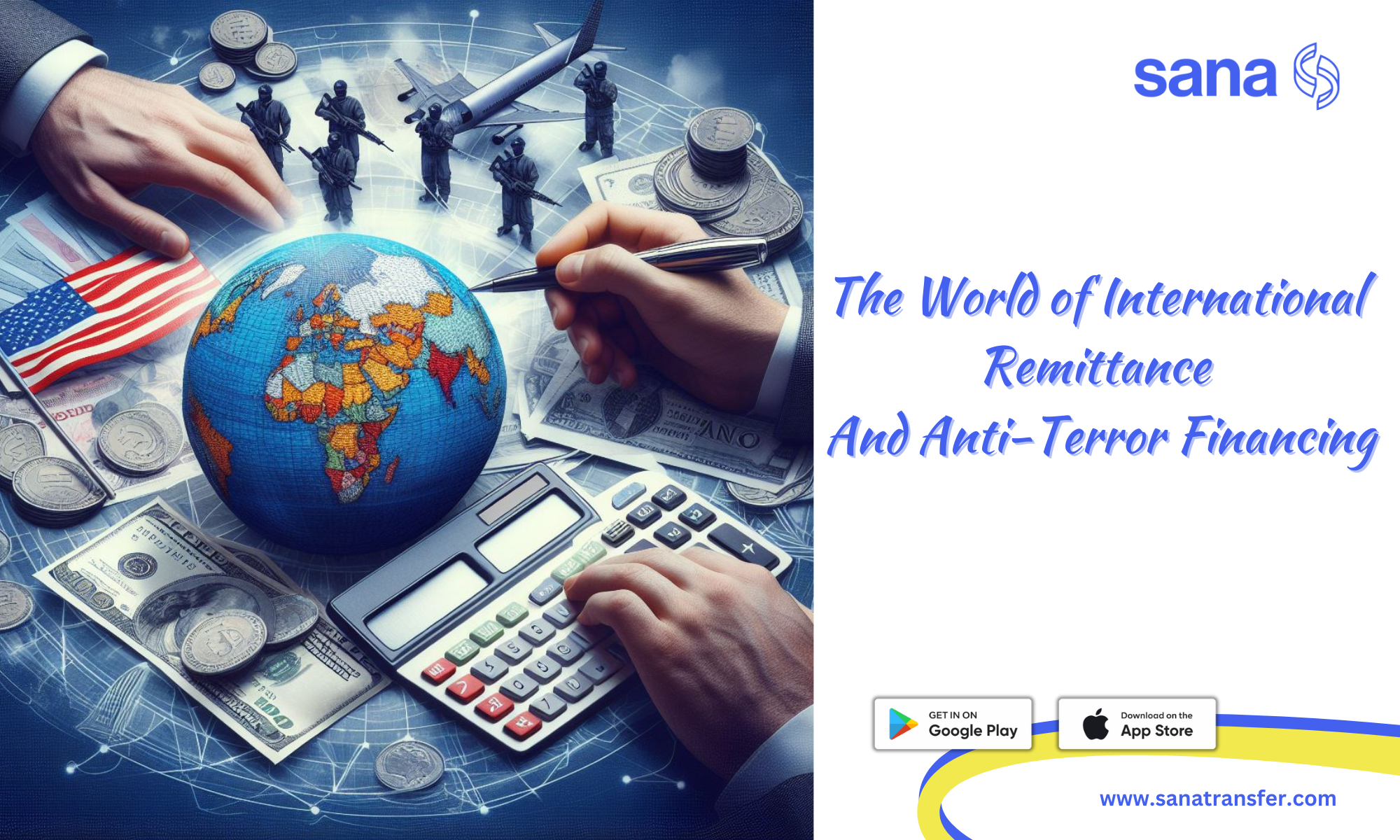The World of International Remittance And Anti-Terror Financing

International remittances, the transfer of money across borders, are a vital lifeline for millions of people around the world. Migrant workers send hard-earned money back home to support families, fuel economic growth, and promote financial inclusion. These financial flows, estimated in the trillions of dollars annually, act as a powerful engine in the global economy.
However, the very features that make remittances valuable - speed, convenience, and sometimes anonymity - can also make them vulnerable to misuse. Terrorist organizations and other criminal actors may seek to exploit remittance channels to move funds undetected. This potential vulnerability creates a complex challenge: ensuring that remittances remain secure and efficient while also implementing effective measures to prevent anti-terror financing.
Striking a balance between facilitating secure and efficient international remittances, and implementing robust anti-terror financing measures, is critical to maintain the integrity of the global financial system and promote sustainable development. We shall be taking pains to address this trend in this article.
The Remittance Landscape
International remittances flow through a network of formal and informal channels, each with its own advantages and limitations.
Formal Channels Of Remittance
Formal channels of the international remittance landscape are the most regulated. They include:
- Banks: Traditional financial institutions offer secure and reliable remittance services, often with competitive rates for large transfers. However, bank transfers can be slow and require both sender and receiver to have bank accounts, limiting accessibility for those in unbanked regions.
- Money Transfer Operators (MTOs): These specialized businesses provide fast and convenient remittance services through a vast network of agent locations. While generally user-friendly, MTO fees can be higher compared to banks.
- Fintech Companies: Alongside traditional players, new players have emerged. These fintech companies like SanaTransfer leverage technology to offer digital remittance solutions, often with lower fees and faster processing times compared to banks or MTOs. Mobile wallets and blockchain technology are examples of tools employed by these innovative remittance service providers.
Informal Channels Of Remittance
Informal channels, on the other hand, operate outside the traditional financial system. One prominent example is the Hawala system, a network of trusted brokers who facilitate money transfers based on honour and reputation, just like the local Bureau de Change operators. While offering speed and flexibility, especially for unbanked populations, the hawala system lacks transparency and regulations, making it susceptible to misuse.
Despite the chosen channel, remittances play a crucial role in development. By sending money back home, migrants:
- Support families: Remittances are often a primary source of income for families in developing countries, helping with basic needs, education, and healthcare.
- Promote financial inclusion: Remittance recipients are more likely to open bank accounts to receive funds, fostering broader financial participation.
The Economic Impact Of Remittances
The economic impact of remittances is significant for both recipient and sender countries:
- Recipient countries: The inflow of remittances acts as a vital source of foreign currency, boosting consumption, investment, and overall economic growth.
- Sender countries: Remittances contribute to the sender country's economy by increasing disposable income in migrant communities and generating fees for remittance service providers.
However, navigating the remittance landscape requires acknowledging the potential vulnerabilities within informal channels while ensuring that regulations in formal systems don't create unnecessary barriers to legitimate transfers.
Anti-Terror Financing Risks
The very features that make remittances valuable - speed, convenience, and sometimes anonymity - can also create vulnerabilities for terrorist organizations and other criminal actors seeking to fund their activities. Here's how remittances can be misused:
- Anonymity: Informal channels like the hawala system offer a high degree of anonymity, making it difficult to track the origin and destination of funds. Terrorist groups might exploit this anonymity to move money without detection.
- Layering Transactions: Terrorist organizations may break down large sums of money into smaller, seemingly unrelated transactions sent through different channels (formal or informal) over time. This "layering" technique makes it harder for authorities to identify the overall movement of funds and its true purpose.
These vulnerabilities raise red flags for suspicious remittance activity, which can include:
- Frequent small transactions: Sending or receiving multiple small remittances, particularly from or to high-risk countries, might warrant further investigation.
- Unexplained source of funds: If a sender lacks a clear source of income to justify the remittance amount, it could be a red flag.
- Recipients with no clear connection to the sender: Transfers to individuals with no apparent relationship to the sender raise suspicion.
- Refusal to provide identification or purpose of transfer: Resistance to providing proper identification or clear details about the purpose of the transfer can be a cause for concern.
The Impact Of Terrorist Financing On National Security
The impact of terrorist financing on national security and financial stability is severe as terrorist organizations use financed activities to threaten public safety, destabilize governments, and spread fear.
Large-scale illicit financial flows can undermine the integrity of the financial system, erode public trust, and disrupt legitimate economic activity.
By effectively detecting and preventing terrorist financing through remittances, authorities can mitigate these risks and promote a safer, more stable global financial environment.
Balancing Security and Efficiency
The fight against anti-terror financing requires a delicate balance between security and efficiency in the remittance landscape.
International regulations and frameworks
These play a crucial role in achieving this balance. Organizations like the Financial Action Task Force (FATF) set global standards for Combating the Financing of Terrorism (CFT). These standards outline procedures for financial institutions to identify and report suspicious activity related to terrorism financing.
Financial institutions
The backbone of formal remittance channels, financial institutions have a critical role in implementing CFT regulations. Here's how:
- Customer Due Diligence (CDD): This involves verifying the identity of customers sending or receiving remittances, assessing their risk profiles, and understanding the source and purpose of funds.
- Transaction Monitoring: Financial institutions continuously monitor transactions for red flags indicative of suspicious activity, such as those outlined earlier. They report such activities to designated authorities for further investigation.
Strict CFT measures
Strict standards for Combating the Financing of Terrorism can create friction for legitimate users. Finding the right balance is key:
- Balancing Security and Efficiency: Overly stringent regulations can increase costs and processing times for remittances, hindering their accessibility for those relying on them most. Regulatory frameworks should be effective in mitigating risks while ensuring fast, affordable remittance services.
Cutting-edge Technology
Technology can also play a pivotal role in achieving this balance:
- Data Analytics: Advanced data analytics tools can sift through large volumes of remittance data to identify patterns and anomalies suggestive of suspicious activity. This allows for targeted investigations and minimizes disruption for legitimate transactions.
- Blockchain: Blockchain technology, with its inherent transparency and immutability, can provide a secure and tamper-proof record of remittance transactions. This can enhance traceability and reduce the risk of misuse.
By leveraging international cooperation, robust regulations, and technological advancements, we can create a remittance ecosystem that safeguards against terrorist financing while facilitating secure, efficient, and affordable money transfers for all.
The Future of Remittances
The global remittance market is projected for continued growth, fueled by globalization and migration trends. As this market expands, the focus on Combating the Financing of Terrorism (CFT) will likely intensify. Navigating this future requires collaboration between governments, financial institutions, and technology providers. Lets touch on these points one after the other:
Continued Growth and CFT Focus
The demand for fast, affordable remittances is expected to rise, particularly in developing countries. However, alongside this growth, a heightened focus on CFT measures will be crucial to ensure the integrity of the financial system.
Collaborative Efforts
Governments must set clear and effective CFT regulations. Financial institutions need to implement these regulations efficiently while staying innovative. Technology providers can develop solutions that enhance security and transparency within the remittance ecosystem. By working together, these stakeholders can create a robust system for secure and compliant money transfers.
Innovative Solutions
This collaborative spirit will pave the way for innovative solutions:
- Artificial Intelligence (AI): New technologies like artificial intelligence and biometrics can further strengthen customer due diligence (CDD) processes, allowing for faster and more accurate identification verification.
- Blockchain Integration: Blockchain technology has the potential to revolutionize remittances by providing a secure, transparent, and immutable record of transactions. This can significantly reduce the risk of fraud and misuse, while also streamlining the overall remittance process.
By embracing innovation and fostering collaboration, we can create a future where remittances are not only secure and efficient but also a powerful tool for financial inclusion and sustainable development. As the global remittance landscape evolves, striking the right balance between security and efficiency will be paramount in ensuring that remittances continue to empower individuals and fuel economic growth across the globe.
In Conclusion
International remittances are a lifeline for millions, fostering financial well-being, promoting development, and driving economic growth. However, the very features that make them valuable can leave them vulnerable to misuse by terrorist organizations. Striking a balance between facilitating secure and efficient remittances, and implementing effective anti-terror financing (CFT) measures, is crucial for a healthy global financial system.
